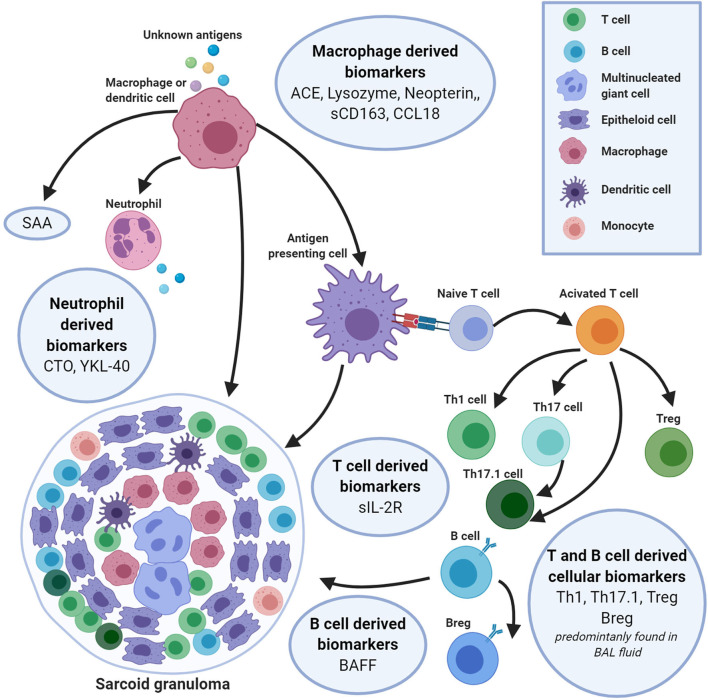Figure 1.
An integrated overview of serum and bronchoalveolar lavage fluid biomarkers produced by cells of the innate and adaptive immune system, involved in the formation of granulomas in sarcoidosis. The sarcoidosis granuloma consists of a tightly formed core of epithelioid and multinucleated-giant cells (MGCs) encircled especially by T helper (Th) cells, but also by B cells, macrophages and dendritic cells (DCs). During this granuloma formation a variety of biomarkers is released by these inflammatory cells. Macrophages are key players in granuloma formation and produce a number of inflammatory biomarkers [e.g., serum angiotensin-converting enzyme (sACE), lysozyme, neopterin, CD163, C-C motive chemokine ligand 18 (CCL18), serum amyloid A (SAA)]. Macrophages activate T-cells by presenting a triggering antigen, which results in an upregulated expression of soluble interleukin 2 receptor (sIL-2R). Apart from T-cells, B-cells also have shown to play a role in granuloma formation. Crucial for the B-cell maturation and function is the biomarker B-cell activating factor (BAFF). All these biomarkers may be useful for the diagnosis and prognosis of sarcoidosis. Figure created with Biorender.com.

